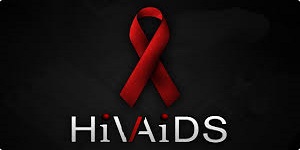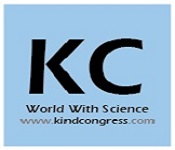
AIDS 2019

Theme: ENHANCING COMPETENCY IN HIV PREVENTION AND CARE
We are delightful to welcome you to the “3rd Annual Summit on AIDS” which is going to be scheduled on September 18-19, 2019 at Singapore. This conference is a global platform for AIDS Disease Professionals where we assure you to have knowledge with scholars from around the world for the best current strategies for diagnosis and treatment of AIDS. Worldwide 300+ conferences are being organized by Meetings International Pte Ltd i.e. USA, Europe and Asia pacific regions. The exciting and innovative program brought together national and international experts to promote the exchange of the latest clinical practices and cutting-edge research in AIDS 2019. World-renowned doctors, researchers, scientists, speakers, the most recent techniques, tactics, and the newest updates in respective field are hallmarks of this AIDS 2019 Conference. The field of AIDS Disease is growing rapidly and its development is making tremendous impacts in medical sciences and pharmaceuticals. The importance and significance can be gauged by the fact that it has made huge advancements over the course of time and is continuing to influence various sectors.
AIDS Conferences | STD Conferences | Upcoming AIDS Conferences | HIV Conferences | Top AIDS Conferences | AIDS Conferences 2019 Singapore | AIDS Meetings | Infectious Diseases Conferences | HIV Congress 2019 | AIDS Conferences in 2019 | AIDS Conferences in Canada
Session 1: HIV/AIDS and Retroviral Diseases
36.9 million People in world were living with AIDS in 2017; it was 33.2 million in 2010, the result of continuing new infections, people living longer with HIV, and general population growth. Global prevalence has leveled since 2001 and was 0.8% in 2016. Despite these challenges, new global efforts have been mounted to address the epidemic and there has been significant progress. This AIDS 2019 conference will also include the topic of retroviruses diseases. Retroviruses induce diseases that do not fit easily into any of the major categories and different tissues can influence the type of disease that develops the first retrovirus associated with disease was equine infectious anemia virus (EIAV). BFU-E and CFU-E contained by anemic cats is very less and FeLV infection suppresses the generation of these precursors in vitro. While murine retroviruses are inactivated by human complement and are not capable of causing human disease.
Related Conference: 21stInternational Conference on HIV and AIDS, May 23-24, 2019, London, UK; 26thConference on Retroviruses and Opportunistic Infections, March 4-7, 2019, Seattle, USA; 25thAnnual BHIVA Conference, April 2-5, 2019, Bournemouth, UK; 10th IAS Conference on HIV Science, July 21-24, 2019, Mexico, USA; 17thEuropean AIDS Conference, November 6-9, 2019, Basel, Switzerland; National HIV Prevention Conference, March 18-21, 2019, Atlanta, USA; STI & HIV 2019 World congress, July 14-17, 2019, Vancouver, Canada; 9thInternational Workshop on HIV Persistence during Therapy, December 10-13, 2019, Miami, USA.
Related Societies: American Sexual Health Association, USA; National Coalition of STD Directors, USA; Johns Hopkins Center for STD Research, USA; Infectious Diseases Society of America; European AIDS Clinical Society; European AIDS Treatment Group: EATG; COHERE(Collaboration of Observational HIV Epidemiological Research in Europe); AIDS ACTION EUROPE, NASTAD, Europe; Australian Federation of AIDS Organisations; India, HIV/AIDS Alliance; AIDS SOCIETY OF INDIA; Children's Aid Society, Singapore; IASSTD & AIDS; WHO: Sexually transmitted infections; British Association for Sexual Health and HIV; WHO HIV/AIDS Programme;National AIDS Control Organization
Session 2: HIV Related Infections, Co-infections and Cancers
There are a number of people living with HIV, infections and cancers. In AIDS 2019 Conference we will endeavor to talk about continuous research of this theme. HIV, co-infections and cancers are Hepatitis B, hepatitis C, tuberculosis, sexually transmitted infections (STIs), human papillomavirus (HPV) and herpes, and fungal infections, Hodgkin’s lymphoma, lung cancer, skin cancer, anal cancer, cervical and vaginal cancer in women, and testicular and prostate cancer in men. These growths can frequently be effectively treated on the off chance that they happen in individuals with HIV who keep up solid safe frameworks with HIV treatment.
Related Conference: 21stInternational Conference on HIV and AIDS, May 23-24, 2019, London, UK; 26thConference on Retroviruses and Opportunistic Infections, March 4-7, 2019, Seattle, USA; 25thAnnual BHIVA Conference, April 2-5, 2019, Bournemouth, UK; 10th IAS Conference on HIV Science, July 21-24, 2019, Mexico, USA; 17thEuropean AIDS Conference, November 6-9, 2019, Basel, Switzerland; National HIV Prevention Conference, March 18-21, 2019, Atlanta, USA; STI & HIV 2019 World congress, July 14-17, 2019, Vancouver, Canada; 9thInternational Workshop on HIV Persistence during Therapy, December 10-13, 2019, Miami, USA.
Related Societies: American Sexual Health Association, USA; National Coalition of STD Directors, USA; Johns Hopkins Center for STD Research, USA; Infectious Diseases Society of America; European AIDS Clinical Society; European AIDS Treatment Group: EATG; COHERE(Collaboration of Observational HIV Epidemiological Research in Europe); AIDS ACTION EUROPE, NASTAD, Europe; Australian Federation of AIDS Organisations; India, HIV/AIDS Alliance; AIDS SOCIETY OF INDIA; Children's Aid Society, Singapore; IASSTD & AIDS; WHO: Sexually transmitted infections; British Association for Sexual Health and HIV; WHO HIV/AIDS Programme;National AIDS Control Organization
Session 3: Stigma, Discrimination and Lived experience with HIV
People living with HIV and AIDS have to face negative attitudes and abuse, these kind of activity refers to HIV-related stigma and discrimination. Stigma and discrimination continue to undermine prevention, treatment and care of people living with the HIV and AIDS. It hinders those with the virus from telling their partners about their status. It threatens their access to health care. It increases their vulnerability to physical violence. And HIV-related stigma affects people’s ability to earn a living, making it even more difficult for them to lift themselves out of poverty. These all limit access to HIV testing, treatment and other HIV services. Knowing that you are HIV-positive can be one of the worst experiences you go through in life. But, HIV will not restrict you from living a long, happy and healthy life. With the right treatment and support, it is possible to live as long as the average person. In our society, there are a lot of misconceptions about what it means to be living with HIV. Ultimately, how you cope with your diagnosis and how you move forward will matter as everyone’s lives are different. STD-AIDS Conference will gather community and society which are fighting against discrimination.
Related Conference: 21stInternational Conference on HIV and AIDS, May 23-24, 2019, London, UK; 26thConference on Retroviruses and Opportunistic Infections, March 4-7, 2019, Seattle, USA; 25thAnnual BHIVA Conference, April 2-5, 2019, Bournemouth, UK; 10th IAS Conference on HIV Science, July 21-24, 2019, Mexico, USA; 17thEuropean AIDS Conference, November 6-9, 2019, Basel, Switzerland; National HIV Prevention Conference, March 18-21, 2019, Atlanta, USA; STI & HIV 2019 World congress, July 14-17, 2019, Vancouver, Canada; 9thInternational Workshop on HIV Persistence during Therapy, December 10-13, 2019, Miami, USA.
Related Societies: American Sexual Health Association, USA; National Coalition of STD Directors, USA; Johns Hopkins Center for STD Research, USA; Infectious Diseases Society of America; European AIDS Clinical Society; European AIDS Treatment Group: EATG; COHERE(Collaboration of Observational HIV Epidemiological Research in Europe); AIDS ACTION EUROPE, NASTAD, Europe; Australian Federation of AIDS Organisations; India, HIV/AIDS Alliance; AIDS SOCIETY OF INDIA; Children's Aid Society, Singapore; IASSTD & AIDS; WHO: Sexually transmitted infections; British Association for Sexual Health and HIV; WHO HIV/AIDS Programme;National AIDS Control Organization
Session 4: HIV relation with Cardiovascular diseases and Aging
Human immunodeficiency virus-infected individuals are at increased risk for CVD.Timely initiation of ART with consequent viral suppression is likely to reduce CVD events and to offset probable side effects from ART-induced metabolic changes. Reduction in smoking in HIV-infected individuals is a public health priority. Cardiovascular disease (CVD) includes a group of problems related to the heart (cardio) or to blood vessels (vascular.) CVD coronary heart disease (heart attacks), angina (chest pain from lack of blood to the heart), cerebrovascular disease (problems with blood vessels in the brain, including stroke), peripheral artery disease (blocked blood vessels in the legs), rheumatic heart disease (a complication of a throat infection), congenital heart disease (due to a birth defect) and heart failure.
Related Conference: 21stInternational Conference on HIV and AIDS, May 23-24, 2019, London, UK; 26thConference on Retroviruses and Opportunistic Infections, March 4-7, 2019, Seattle, USA; 25thAnnual BHIVA Conference, April 2-5, 2019, Bournemouth, UK; 10th IAS Conference on HIV Science, July 21-24, 2019, Mexico, USA; 17thEuropean AIDS Conference, November 6-9, 2019, Basel, Switzerland; National HIV Prevention Conference, March 18-21, 2019, Atlanta, USA; STI & HIV 2019 World congress, July 14-17, 2019, Vancouver, Canada; 9thInternational Workshop on HIV Persistence during Therapy, December 10-13, 2019, Miami, USA.
Related Societies: American Sexual Health Association, USA; National Coalition of STD Directors, USA; Johns Hopkins Center for STD Research, USA; Infectious Diseases Society of America; European AIDS Clinical Society; European AIDS Treatment Group: EATG; COHERE(Collaboration of Observational HIV Epidemiological Research in Europe); AIDS ACTION EUROPE, NASTAD, Europe; Australian Federation of AIDS Organisations; India, HIV/AIDS Alliance; AIDS SOCIETY OF INDIA; Children's Aid Society, Singapore; IASSTD & AIDS; WHO: Sexually transmitted infections; British Association for Sexual Health and HIV; WHO HIV/AIDS Programme;National AIDS Control Organization
Session 5: HIV Diagnosis and Therapy
HIV contamination represents a range of sickness that can start with a short intense retroviral disorder that normally advances to a multiyear chronic and clinically latent ailment. Without treatment, this sickness inevitably advances to a symptomatic, life-threatening immunodeficiency illness known as AIDS. HIV replication is available amid all phases of the contamination and progressively depletes CD4 lymphocytes, which are critical for maintenance of effective immune function. Your doctor can diagnose HIV by testing blood for the presence of antibodies to HIV. After infection, HIV antibodies may take as long as six months to be produced in quantities large enough to show up in standard blood tests.
Related Conference: 21stInternational Conference on HIV and AIDS, May 23-24, 2019, London, UK; 26thConference on Retroviruses and Opportunistic Infections, March 4-7, 2019, Seattle, USA; 25thAnnual BHIVA Conference, April 2-5, 2019, Bournemouth, UK; 10th IAS Conference on HIV Science, July 21-24, 2019, Mexico, USA; 17thEuropean AIDS Conference, November 6-9, 2019, Basel, Switzerland; National HIV Prevention Conference, March 18-21, 2019, Atlanta, USA; STI & HIV 2019 World congress, July 14-17, 2019, Vancouver, Canada; 9thInternational Workshop on HIV Persistence during Therapy, December 10-13, 2019, Miami, USA.
Related Societies: American Sexual Health Association, USA; National Coalition of STD Directors, USA; Johns Hopkins Center for STD Research, USA; Infectious Diseases Society of America; European AIDS Clinical Society; European AIDS Treatment Group: EATG; COHERE(Collaboration of Observational HIV Epidemiological Research in Europe); AIDS ACTION EUROPE, NASTAD, Europe; Australian Federation of AIDS Organisations; India, HIV/AIDS Alliance; AIDS SOCIETY OF INDIA; Children's Aid Society, Singapore; IASSTD & AIDS; WHO: Sexually transmitted infections; British Association for Sexual Health and HIV; WHO HIV/AIDS Programme;National AIDS Control Organization
Session 6: HIV Drug Discovery, Research & Vaccines
After the virus was discovered 25 years ago the development of drugs for HIV infection began. Since then, progress has been substantial, but numerous uncertainties persist about the best way to manage this disease. Here we review the current treatment options, consider novel mechanisms that can be exploited for existing drug targets, and explore the potential of novel targets. With a view to the next quarter century, we consider whether drug resistance can be avoided, which drug classes will be favored over others, which strategies are most likely to succeed and the potential impact of pharmacogenomics and individualized therapy.
Vaccines have been our best weapon against the world’s deadliest infectious diseases, including smallpox, polio, measles, and yellow fever. An effective preventive AIDS vaccine would teach the body how to prevent HIV infection. Vaccines are the most powerful public health tools available and an AIDS vaccine would play a powerful role in ensuring the end to the AIDS epidemic. An HIV vaccines does not yet exist, but efforts to develop a vaccine against HIV, the virus that causes AIDS, have been underway for many years.
Related Conference: 21stInternational Conference on HIV and AIDS, May 23-24, 2019, London, UK; 26thConference on Retroviruses and Opportunistic Infections, March 4-7, 2019, Seattle, USA; 25thAnnual BHIVA Conference, April 2-5, 2019, Bournemouth, UK; 10th IAS Conference on HIV Science, July 21-24, 2019, Mexico, USA; 17thEuropean AIDS Conference, November 6-9, 2019, Basel, Switzerland; National HIV Prevention Conference, March 18-21, 2019, Atlanta, USA; STI & HIV 2019 World congress, July 14-17, 2019, Vancouver, Canada; 9thInternational Workshop on HIV Persistence during Therapy, December 10-13, 2019, Miami, USA.
Related Societies: American Sexual Health Association, USA; National Coalition of STD Directors, USA; Johns Hopkins Center for STD Research, USA; Infectious Diseases Society of America; European AIDS Clinical Society; European AIDS Treatment Group: EATG; COHERE(Collaboration of Observational HIV Epidemiological Research in Europe); AIDS ACTION EUROPE, NASTAD, Europe; Australian Federation of AIDS Organisations; India, HIV/AIDS Alliance; AIDS SOCIETY OF INDIA; Children's Aid Society, Singapore; IASSTD & AIDS; WHO: Sexually transmitted infections; British Association for Sexual Health and HIV; WHO HIV/AIDS Programme;National AIDS Control Organization
Session 7: Viral, Bacterial, Fungal & Protozoan STDs
STDs can be spread with sexual activity, depending on the disease. STDs are most often by viruses and bacteria. The following is a list of the most common STDs, their causes. Additionally, there are other infections (see STDs with asterisk mark) that may be transmitted on occasion by sexual activity, but these are typically not considered to be STDs by many investigators. Bacterial STDs are caused by bacteria and Viral STDs are caused by viruses, this is the main difference between these two categories of (STDs). As a result of being caused by different microorganisms, bacterial and viral STDs vary in their treatment. Bacterial STDs, such as gonorrhea, syphilis, and chlamydia, are often cured with antibiotics. But viral STDs, (the four “H’s”) such as HPV, HIV, herpes, and hepatitis (the only STD that can be prevented with a vaccine), have no cure, but their symptoms can be alleviated with treatment.
Related Conference: 21stInternational Conference on HIV and AIDS, May 23-24, 2019, London, UK; 26thConference on Retroviruses and Opportunistic Infections, March 4-7, 2019, Seattle, USA; 25thAnnual BHIVA Conference, April 2-5, 2019, Bournemouth, UK; 10th IAS Conference on HIV Science, July 21-24, 2019, Mexico, USA; 17thEuropean AIDS Conference, November 6-9, 2019, Basel, Switzerland; National HIV Prevention Conference, March 18-21, 2019, Atlanta, USA; STI & HIV 2019 World congress, July 14-17, 2019, Vancouver, Canada; 9thInternational Workshop on HIV Persistence during Therapy, December 10-13, 2019, Miami, USA.
Related Societies: American Sexual Health Association, USA; National Coalition of STD Directors, USA; Johns Hopkins Center for STD Research, USA; Infectious Diseases Society of America; European AIDS Clinical Society; European AIDS Treatment Group: EATG; COHERE(Collaboration of Observational HIV Epidemiological Research in Europe); AIDS ACTION EUROPE, NASTAD, Europe; Australian Federation of AIDS Organisations; India, HIV/AIDS Alliance; AIDS SOCIETY OF INDIA; Children's Aid Society, Singapore; IASSTD & AIDS; WHO: Sexually transmitted infections; British Association for Sexual Health and HIV; WHO HIV/AIDS Programme;National AIDS Control Organization
Session 8: Advocacy & Community Engagement in HIV Research
Community engagement, joining components of the more extensive ideas of public and partner engagement, is progressively advanced all around, including for health research led in developing nations. In sub-Saharan Africa, people group engagement needs and difficulties are ostensibly heightened for studies including gay, bisexual and other men who have intercourse with men, where male same-sex sexual interactions are frequently exceedingly trashed and even unlawful.
Related Conference: 21stInternational Conference on HIV and AIDS, May 23-24, 2019, London, UK; 26thConference on Retroviruses and Opportunistic Infections, March 4-7, 2019, Seattle, USA; 25thAnnual BHIVA Conference, April 2-5, 2019, Bournemouth, UK; 10th IAS Conference on HIV Science, July 21-24, 2019, Mexico, USA; 17thEuropean AIDS Conference, November 6-9, 2019, Basel, Switzerland; National HIV Prevention Conference, March 18-21, 2019, Atlanta, USA; STI & HIV 2019 World congress, July 14-17, 2019, Vancouver, Canada; 9thInternational Workshop on HIV Persistence during Therapy, December 10-13, 2019, Miami, USA.
Related Societies: American Sexual Health Association, USA; National Coalition of STD Directors, USA; Johns Hopkins Center for STD Research, USA; Infectious Diseases Society of America; European AIDS Clinical Society; European AIDS Treatment Group: EATG; COHERE(Collaboration of Observational HIV Epidemiological Research in Europe); AIDS ACTION EUROPE, NASTAD, Europe; Australian Federation of AIDS Organisations; India, HIV/AIDS Alliance; AIDS SOCIETY OF INDIA; Children's Aid Society, Singapore; IASSTD & AIDS; WHO: Sexually transmitted infections; British Association for Sexual Health and HIV; WHO HIV/AIDS Programme;National AIDS Control Organization
Session 9: Immunology and Infertility of STDs/STIs
Adults with immune deficiencies are significantly more inclined to encounter the ill impacts of molluscum contagiosum. Around 90% of patients who are HIV-positive have skin bruises or some resemblance thereof, including molluscum contagiosum. In one review, 18% of patients who were HIV positive were found to have molluscum contagiosum. In immune-deficient people, molluscum contagiosum can spread to all body surfaces. Immunocompetent adults don't get molluscum contagiosum wounds far from the genital zone. The nearness of molluscum contagiosum on the substance of an adult is a better than average marker that they have an HIV ailment or some other immunosuppressive condition. Immunogenetics helps in perception the pathogenesis of a couple of insusceptible frameworks and overwhelming infections and bacterial maladies under clinical examinations of STDs.
Some sexually transmitted contaminations can extent from mother to infant amid labor or breastfeeding, using unsterilized IV tranquilizer needles and blood transfusions. Sexually transmitted contaminations have been around for a large number of years. Microorganisms that exists on the skin or mucous layers of the male or female genital zone can be transmitted, as can living beings in semen, vaginal emissions or blood amid sex.
Sexually transmitted diseases (STDs) are contaminations that are distributed starting with one individual then onto the next through sexual contact. The reasons for STDs are microscopic organisms like bacteria, parasites, yeast, and viruses. There are more than 20 types of STDs, including Chlamydia, Genital herpes, Gonorrhea, HIV/AIDS, HPV, Syphilis, Trichomoniasis. Most STDs influence both men and women, but mostly they cause severe health issues for women. If a pregnant lady has an STD, it can bring about genuine medical issues for the child.
Related Conference: 21stInternational Conference on HIV and AIDS, May 23-24, 2019, London, UK; 26thConference on Retroviruses and Opportunistic Infections, March 4-7, 2019, Seattle, USA; 25thAnnual BHIVA Conference, April 2-5, 2019, Bournemouth, UK; 10th IAS Conference on HIV Science, July 21-24, 2019, Mexico, USA; 17thEuropean AIDS Conference, November 6-9, 2019, Basel, Switzerland; National HIV Prevention Conference, March 18-21, 2019, Atlanta, USA; STI & HIV 2019 World congress, July 14-17, 2019, Vancouver, Canada; 9thInternational Workshop on HIV Persistence during Therapy, December 10-13, 2019, Miami, USA.
Related Societies: American Sexual Health Association, USA; National Coalition of STD Directors, USA; Johns Hopkins Center for STD Research, USA; Infectious Diseases Society of America; European AIDS Clinical Society; European AIDS Treatment Group: EATG; COHERE(Collaboration of Observational HIV Epidemiological Research in Europe); AIDS ACTION EUROPE, NASTAD, Europe; Australian Federation of AIDS Organisations; India, HIV/AIDS Alliance; AIDS SOCIETY OF INDIA; Children's Aid Society, Singapore; IASSTD & AIDS; WHO: Sexually transmitted infections; British Association for Sexual Health and HIV; WHO HIV/AIDS Programme;National AIDS Control Organization
Session 10: Recent Advancement in HIV/AIDS, STDs and STIs
The search for a preventive immunization that can stop the worldwide pandemic is a definitive objective of HIV research. Improvement of an immunization against HIV-1 has been tormented by numerous outlandish difficulties. Distinctive immunization ideas have been tried to conquer these difficulties. Trial immunizations that specified guarantee in preclinical trials were progressed into clinical trials. However, human trials turned out to be an enormous dissatisfaction until the aftereffects of the RV144 trial in Thailand
Urine tests can be used to test for urethritis in both sexual orientations. Late urination will have washed gonorrheal discharge from the urethra. In this way, to accumulate sufficient discharge, pee tests should be taken no not as much as an hour after the patient's last pee. Vaginal swab illustrations are used to test for cervicitis. Gonorrheal cervicitis produces a satisfactory discharge that swabs require not be taken by speculum examination. Or maybe, they can be assembled unpredictably by the patient herself.
Related Conference: 21stInternational Conference on HIV and AIDS, May 23-24, 2019, London, UK; 26thConference on Retroviruses and Opportunistic Infections, March 4-7, 2019, Seattle, USA; 25thAnnual BHIVA Conference, April 2-5, 2019, Bournemouth, UK; 10th IAS Conference on HIV Science, July 21-24, 2019, Mexico, USA; 17thEuropean AIDS Conference, November 6-9, 2019, Basel, Switzerland; National HIV Prevention Conference, March 18-21, 2019, Atlanta, USA; STI & HIV 2019 World congress, July 14-17, 2019, Vancouver, Canada; 9thInternational Workshop on HIV Persistence during Therapy, December 10-13, 2019, Miami, USA.
Related Societies: American Sexual Health Association, USA; National Coalition of STD Directors, USA; Johns Hopkins Center for STD Research, USA; Infectious Diseases Society of America; European AIDS Clinical Society; European AIDS Treatment Group: EATG; COHERE(Collaboration of Observational HIV Epidemiological Research in Europe); AIDS ACTION EUROPE, NASTAD, Europe; Australian Federation of AIDS Organisations; India, HIV/AIDS Alliance; AIDS SOCIETY OF INDIA; Children's Aid Society, Singapore; IASSTD & AIDS; WHO: Sexually transmitted infections; British Association for Sexual Health and HIV; WHO HIV/AIDS Programme;National AIDS Control Organization
Session 11: Current Focus in Virology Research
Branch of science deals with the study of viruses - submicroscopic, parasitic particles of genetic material contained in a protein coat and virus-like agents is called virology. Virology is often considered a part of microbiology or of pathology. Some of our greatest challenges and triumphs have involved virology. Our HIV 2018 conference is bringing experts from the field of HIV, STD AIDS, STIs Vaccines, virology and Immunology or discussion of the latest advances and ideas and to stimulate interdisciplinary interactions. Conference like ours will help to speed up of the development of effective therapies for viral disorders. Traditionally restricting the spread of infectious disease has been able through use of vaccines, antibiotics, antiviral drugs, and public health measures. But in the face of challenges like drug-resistant microbes and the emergence of HIV, future answers hinge on progressive research in molecular virology and microbiology.
Related Conference: 21stInternational Conference on HIV and AIDS, May 23-24, 2019, London, UK; 26thConference on Retroviruses and Opportunistic Infections, March 4-7, 2019, Seattle, USA; 25thAnnual BHIVA Conference, April 2-5, 2019, Bournemouth, UK; 10th IAS Conference on HIV Science, July 21-24, 2019, Mexico, USA; 17thEuropean AIDS Conference, November 6-9, 2019, Basel, Switzerland; National HIV Prevention Conference, March 18-21, 2019, Atlanta, USA; STI & HIV 2019 World congress, July 14-17, 2019, Vancouver, Canada; 9thInternational Workshop on HIV Persistence during Therapy, December 10-13, 2019, Miami, USA.
Related Societies: American Sexual Health Association, USA; National Coalition of STD Directors, USA; Johns Hopkins Center for STD Research, USA; Infectious Diseases Society of America; European AIDS Clinical Society; European AIDS Treatment Group: EATG; COHERE(Collaboration of Observational HIV Epidemiological Research in Europe); AIDS ACTION EUROPE, NASTAD, Europe; Australian Federation of AIDS Organisations; India, HIV/AIDS Alliance; AIDS SOCIETY OF INDIA; Children's Aid Society, Singapore; IASSTD & AIDS; WHO: Sexually transmitted infections; British Association for Sexual Health and HIV; WHO HIV/AIDS Programme;National AIDS Control Organization
Global Market Analysis for AIDS:
There are around 36.7 million people suffering from HIV infection in 2015 (WHO studies). The burden of HIV/AIDS increases with time, varies according to region and the countries, where Sub Saharan Africa leads with 1 in 25 people living with HIV. There is global efforts been put to create awareness, build health community and society to prevent HIV and aid in treatment of HIV affected people. The global HIV/AIDS diagnostics market is expected to further grow during the forecast period due to factors such as rising in incidence of HIV infections, awareness about available diagnostic and treatment options and technological advancement in diagnostic tests. HIV diagnostic tests have evolved over the period of time by reducing the window period for result delivery. Use of rapid test for HIV diagnosis has increased their coverage to peripheral areas with minimum specialised facility. Enhanced accuracy of the tests and simple usage has further attracted people to get tested and easy access to the healthcare. In developing countries such as China, India and others, with growing population, rising awareness, government initiatives in prevention and management of HIV-AIDS, the market will witness further growth.
The HIV/AIDS diagnostics market mainly consists of antibody test, HIV-2 & Group O diagnostic tests, viral load tests, CD4 testing, early infant diagnostics, viral identification testing. Antibody test will continue to occupy dominant position through the forecast period. As of the current market scenario, North America followed by Europe dominate the global HIV/AIDS diagnostics market due to increasing incidence of HIV infected population, technological advancement in diagnostic and treatment for AIDS, awareness programs and government aided healthcare initiatives and access. Asia Pacific is the fastest growing regional market driven by factors such as rapidly increasing HIV population, rising awareness about HIV and blood transfusion risks, improvement in healthcare infrastructure in emerging economies.
HIV in Europe:
At the end of 2015, the cumulative number of people diagnosed with HIV in the WHO European Region increased to over 2 million. More than 153 000 new HIV cases contributed to this figure in 2015 – a 7% increase compared to the previous year and the highest annual number since reporting began in the 1980s. Alarmingly, around a third of those people do not know that they are infected. Despite the progress in achieving universal access to HIV prevention, treatment, care and support across the Region over the last decade, the response to the HIV epidemic still faces many challenges. The WHO European Region is the only region worldwide where the number of new HIV infections is rising. One reason for this worrying trend: over half (51%) of the reported HIV diagnoses happen in a late stage of infection.
HIV in USA:
Around 1.1 million people are living with HIV in the United States of America (USA). Nearly one in seven of these people are unaware they have HIV. The size of the epidemic is relatively small compared to the country’s population, but is heavily concentrated among several key affected populations. The USA is the greatest funder of the global response to HIV, but also has an ongoing HIV epidemic itself, with around 37,600 new infections a year. Stigma and discrimination continue to hamper people's access to HIV prevention as well as testing and treatment services, which fuels a cycle of new infections. HIV rates are higher in southern states, which are home to around 45% of all people living with HIV, and account for around half of the new diagnoses annually in the USA, despite making up roughly one-third (37%) of the population. Since the beginning of the HIV epidemic, 692,790 people have died of AIDS-related illnesses in the USA
HIV in Asia:
The Asia and Pacific region was home to an estimated 5.2 million people living with HIV/AIDS in 2017. China, India and Indonesia account for almost three-quarters of the total number of people living with HIV in the region. It is increasingly clear that the Asia and Pacific region is falling behind Africa in its HIV response. In 2017, 74% of people living with HIV in this region were aware of their status. Among those diagnosed with HIV, 71% were on treatment and 85% were virally suppressed. In terms of treatment coverage this equates to 57% of all people living with HIV being on treatment and of those, just 45% being virally suppressed. In 2017, 280,000 people became infected with HIV in the region. Although new infections declined by 14% between 2010 and 2017, progress has slowed in recent years and new infections are on the rise in some countries. In particular, Philippines and Pakistan are facing rapidly expanding HIV epidemics.
HIV in Middle East:
The Middle East and North Africa (MENA) region has the lowest HIV prevalence in the world (0.1%) with 230,000 people recorded to be living with HIV/AIDS in 2016. This is in contrast to sub-Saharan Africa, which has the highest HIV prevalence of all regions (7.1%).Moreover, in 2016, there were roughly 18,000 new HIV infections – only a small 4% decrease on the previous year. Over half (65%) of the new infections recorded during the year occurred in Iran, Sudan and Somalia. Across the region’s countries in 2016, just 58% of people living with HIV were aware of their status, 41% of people living with HIV and aware of their status were on treatment, and just 66% of those people were on treatment achieving viral suppression.
HIV in Netherlands:
The majority of registered and monitored adults living with HIV/AIDS in the Netherlands are male (80%). Amongst men, homosexual contact was by far the greatest risk factor (72%), whereas heterosexual transmission was the greatest risk factor (88%) amongst women. Despite improved testing in The Netherlands over the last two decades, even today, 43% of infected individuals are diagnosed late in the course of their infection. As such, many people in the Netherlands are unaware that they are living with HIV, this has serious implications for both the individual and public health as it can increase the risk that HIV/AIDS will be transmitted.
In 2016, an estimated 23,000 Netherlanders are living with HIV/AIDS, out of the 17 million total populations. Less than 500 estimated new HIV/AIDS infections occurred in 2016. Gender prevalence amongst adults (15-49) shows women at .1% compared to men at .3%. Out of the 23,000 Netherlanders living with HIV, approximately 18,600 are on treatment.
Scope:
The HIV therapeutics market was worth around $14 billion worldwide in 2013, and at a Compound Annual Growth Rate (CAGR) of 0.9%, Global Data ventures this market to achieve a sum of $15 billion in deals by 2023. These deals are required to come prevalently from the US showcase, as money related starkness measures remain an essential hindrance to the development of the HIV advertise in alternate nations canvassed in this report. Over Global Data's 2013–2023 gauge period, the expanded take-up of STRs is required to drive advertise development. KOLs met by Global Data expect that INI-based STRs — drove by ViiV's Triumeq and Gilead's Quad 2 — will rule the commercial center for the length of the figure time frame. Antiretroviral therapy, a breakthrough treatment for HIV infection, suppresses the levels of circulating HIV viral particles in the blood. When it works, it results in radical improvement in health and life expectancy for HIV-positive individuals. HIV resistance to the antiviral tenofovir, one of the mainstays of HIV treatment and prevention, is increasingly common following therapy, particularly in low and middle-income countries, according to a new, multi-national study. With the study of areas related to AIDS/HIV, HIV status, HIV Vaccines, Advances in HIV treatment, Diagnosis and Treatment of AIDS/HIV, Transmission of HIV, Advances in HIV Tests, HIV Vaccines, Innovative HIV drugs. Every year, around 300,000 cervical cancer deaths are registered due to HPV. The same data show approximately 1,370,000 deaths by acquired immune deficiency syndrome (AIDS) worldwide in the countries.
Universities related to HIV/AIDS Worldwide:
USA:
Augusta University
Wayne State University
Penn University
University of Maryland
Drexel University
University Of Miami
University of Georgia
Harvard University
Washington University
University of Illinois
University of Minnesota
University of Charleston
West Virginia University
University of Wisconsin
University of Wisconsin
Europe:
University of Cambridge
University of Oxford
University of Copenhagen
University College London
Swiss Federal Institute of Technology Zurich
Imperial College London
University of Zurich
Karolinska Institute
University of Manchester
University of Munich
University of Edinburgh
Pierre and Marie Curie University
Catholic University of Leuven
Heidelberg University
University of Helsinki
Asia Pacific:
Osaka University
University of Tokyo
National University of Singapore
Kyoto University
Mahidol University
Tel Aviv University
University of Hong Kong
Keio University
Hebrew University of Jerusalem
Seoul National University
National Taiwan University
Sun Yat-sen University
Fudan University
Zhejiang University
Peking University
Middle East:
Alexandria University
Cairo University
American University of Kuwait
The Lebanese American University (LAU)
Weill Cornell Medical College in Qatar
Paris-Sorbonne University Abu Dhabi
Mohammed bin Rashid University of Medicine and Health Sciences
Hebrew University
King Saud bin Abdulaziz University for Health Sciences
King Saud University
Gulf Medical University
Sana'a University
HIV Related Association & Societies:
USA:
American Academy of HIV Medicine
American Sexual Health Association
Association of Nurses in AIDS Care
Association for Professionals in Infection Control and Epidemiology
International AIDS Society - USA
International AIDS Society
Infectious Diseases Society of America
British HIV Association
Australasian Society for HIV Medicine
HIV Medicine Association
International Association of Physicians in AIDS Care
National Medical Association
HIV Medicine Association
Europe:
The European AIDS Clinical Society
Aids Hilfe Wien Austria
EATG (European AIDS Treatment Group) Belgium
Czech AIDS Help Society Czech Republic
AIDS Fondnet Denmark
Deutche AIDS-Hilfe / AIDS Action Europe Germany
Global Network of People Living with HIV Netherlands
ARAS - Romanian Association against AIDS Romania
Alliance Global Ukraine
European AIDS Treatment Group
HIV Pharmacy Association
Asia Pacific:
CARAM Asia
National AIDS Programme
National Center for HIV/AIDS, Dermatology and STDs
AIDS Concern
Hong Kong AIDS Foundation
The Society for AIDS Care
HIV Medicine Association of India
AIDS Clinical Center
Korean HIV/AIDS Prevention and Support Center
Taiwan Tongzhi Hotline Association
Middle East:
Egyptian AIDS Society
Egyptian Network of NGOs fighting AIDS
AIDS Research Center of Iran
HATAM - HIV/AIDS Treatment and Research Center
Pozitif Yasam Dernegi (Positive Living Association)
Saudi Charity Association for AIDS Patients
National AIDS Programme
Israel AIDS task force
National HIV/AIDS program
Funding bodies:
Centers for Disease Control (CDC)
National Institute of Allergy and Infectious Diseases (NIAID)
National Institute of Child Health and Human Development (NICHD)
NIH Office of AIDS Research (OAR)
Irish Aid
Elton john AIDS foundation
Mac AIDS fund
The global fund
Conclusion: Unprotected sex with an HIV-positive individual does not inevitably lead to HIV/AIDS transmission. HIV/AIDS exposure is also extremely unlikely when there is not enough infectious virus in sexual fluids due to successful antiretroviral treatment. Neither are spitting, biting and throwing body fluids significant risks of HIV/AIDS exposure. AIDS 2019 Conference provided a much needed platform for exchanging and strengthening knowledge and resources regarding HIV/AIDS testing and care in Europe and neighbouring countries. As the discussions and wealth of evidence presented show, many researchers, policy-makers, service providers and advocates are working to better understand and indentify evidence-based solutions to this crucial health challenge.
References:
https://www.amfar.org
https://www.researchandmarkets.com/research/cn7rz6/global_hiv?w=4
http://www.acutemarketreports.com/report/hiv-aids-diagnostics-market
https://www.kaloramainformation.com/HIV-Diagnostics-Therapeutics-1646600/
- HIV/AIDS and Retroviral Diseases
- HIV Related Infections, Co-infections & Cancers
- Stigma, Discrimination and Lived Experience With HIV
- HIV relation with Cardiovascular diseases and Aging
- HIV Diagnosis and Therapy
- HIV Drug Discovery, Research & Vaccines
- Viral, Bacterial, Fungal & Protozoan STDs
- Advocacy & Community Engagement in HIV Research
- Immunology and Infertility of STDs/STIs
- Recent Advancement in HIV/AIDS, STDs and STIs
- Current Focus in Virology Research
- HIV and AIDS Research Journal
- Journal of Virology & Antiviral Research
- Vector Biology Journal

























































































































